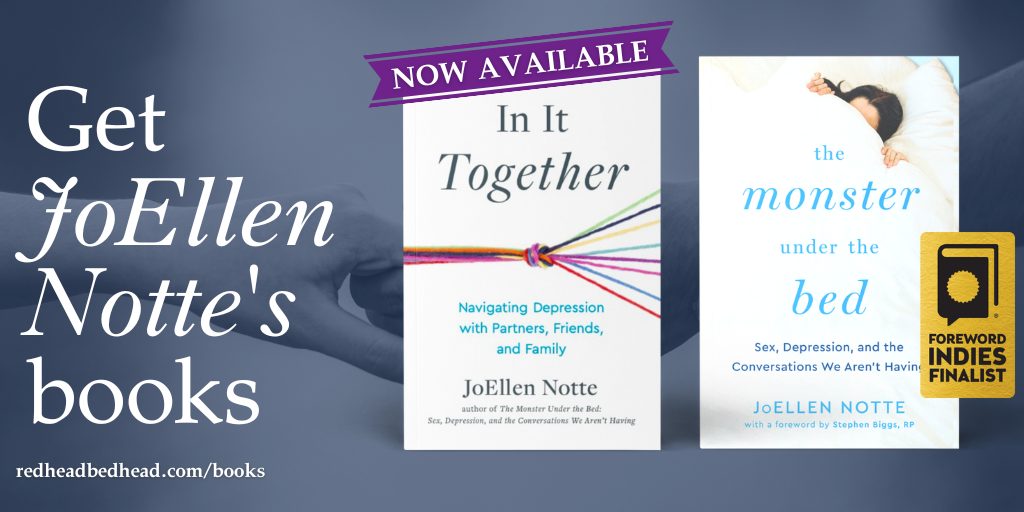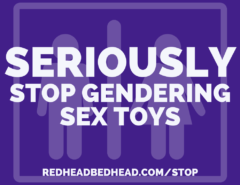One of my favorite pieces of feedback I have ever gotten after teaching came from a student in a class I taught during the University of Tennessee’s Sex Week in 2017. The class was called Playtime: Using Toys in Your Sex Life (I didn’t name it, I would have gone more fun) and the student mentioned how trans-inclusive my language was. What made me proud of this was, well, obviously the fact that my class succeeded in being inclusive but also, that I had created a class that felt inclusive without doing any of the awkward language things that frequently happen when we strive for inclusivity. I never said anything awkward like “for vulva havers” or “if your partner is someone without a prostate” or any of what I’ve come to think of clunky inclusive language. In fact, I basically made my class welcoming to everybody not by adding language but by stripping away the superfluous descriptors that make things exclusionary.
The fact of the matter is there is absolutely no reason that it is necessary to use gendered language when discussing sex toys (for example calling them “sex toys for women” or “male sex toys” ) and, in fact, there are several huge downsides to the practice. First off, it is alienating to your customers. a lot of folks insist that the gendered language is there to guide the consumer (more on that in a minute) but really, all it’s doing is propagating the (hugely flawed) idea that gender = genitals.
In my years of touring sex shops and advising adult retail businesses, I’ve heard more than my fair share of arguments about how customers would be “confused” if they didn’t see labels like “women’s sex toys” and “men’s sex toys” in a shop or on a site and I’ve never, for one second, bought it. First off, I think it sells customers short: if people could figure out how to order a grande half-caf skinny vanilla soy latte, they can figure out your shop without you having to alienate everyone who is not cisgender. Secondly, it misses out on a huge opportunity to educate and create sex toy savvy consumers. How?
Well first off, it keeps minds closed by encouraging folks to grab for the nearest toy that “fits” their gender rather than digging deeper to learn what things do. Instead of offering options based on what a toy accomplishes. Shunting someone over to the “women’s” toy section sends the message “these are the toys that work for you based on your gender” while offering them sections for internal stimulation and external stimulation or g-spot, clitoral, or prostate stimulation allows them to focus in based on what they know they like or what they are curious about. Further, the practice of gendering toys closes the mind, making it harder to see what products might give you pleasure. If a toy is in the “women’s” section, your clients who identify in any other way get the message that that toys isn’t for them and, in turn, miss out on the pleasure they could get from that product. All because it seemed “easy” to divide up products by gender. There’s seriously no good reason to do this.
Now that we’ve established that there gendering sex toys is completely unnecessary, you may be wondering what to do instead. Well, we’re getting there! I’m going to offer you suggestions to help you not only talk about sex toys without gendered language but to do it well. Come back next week for “There is No Reason to Gender Sex Toys Part 2: No it won’t sound ‘weird’, ‘awkward’ or ‘confusing'” See you then, folks!
This post was sponsored by Bellesa. All opinions are my own.









